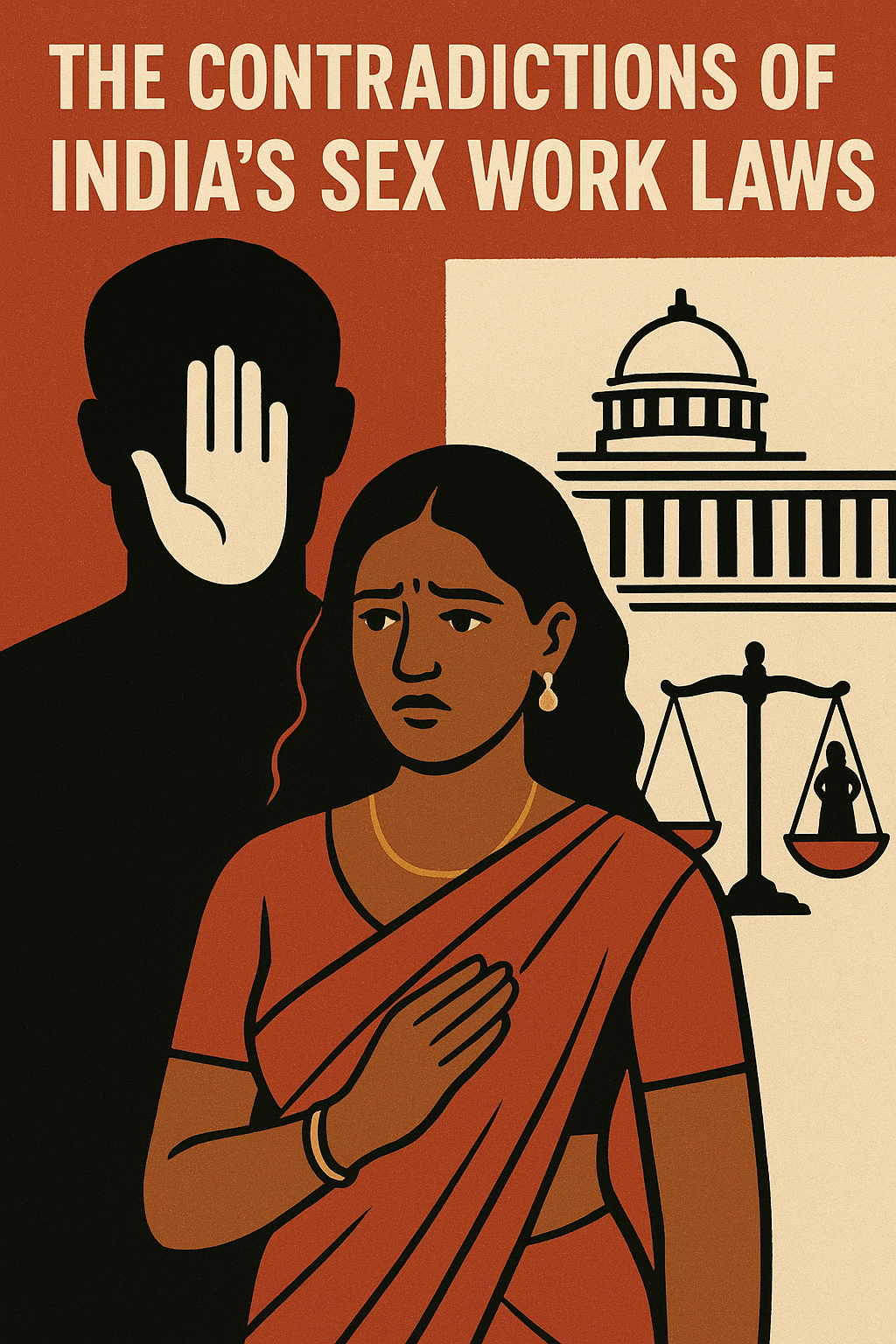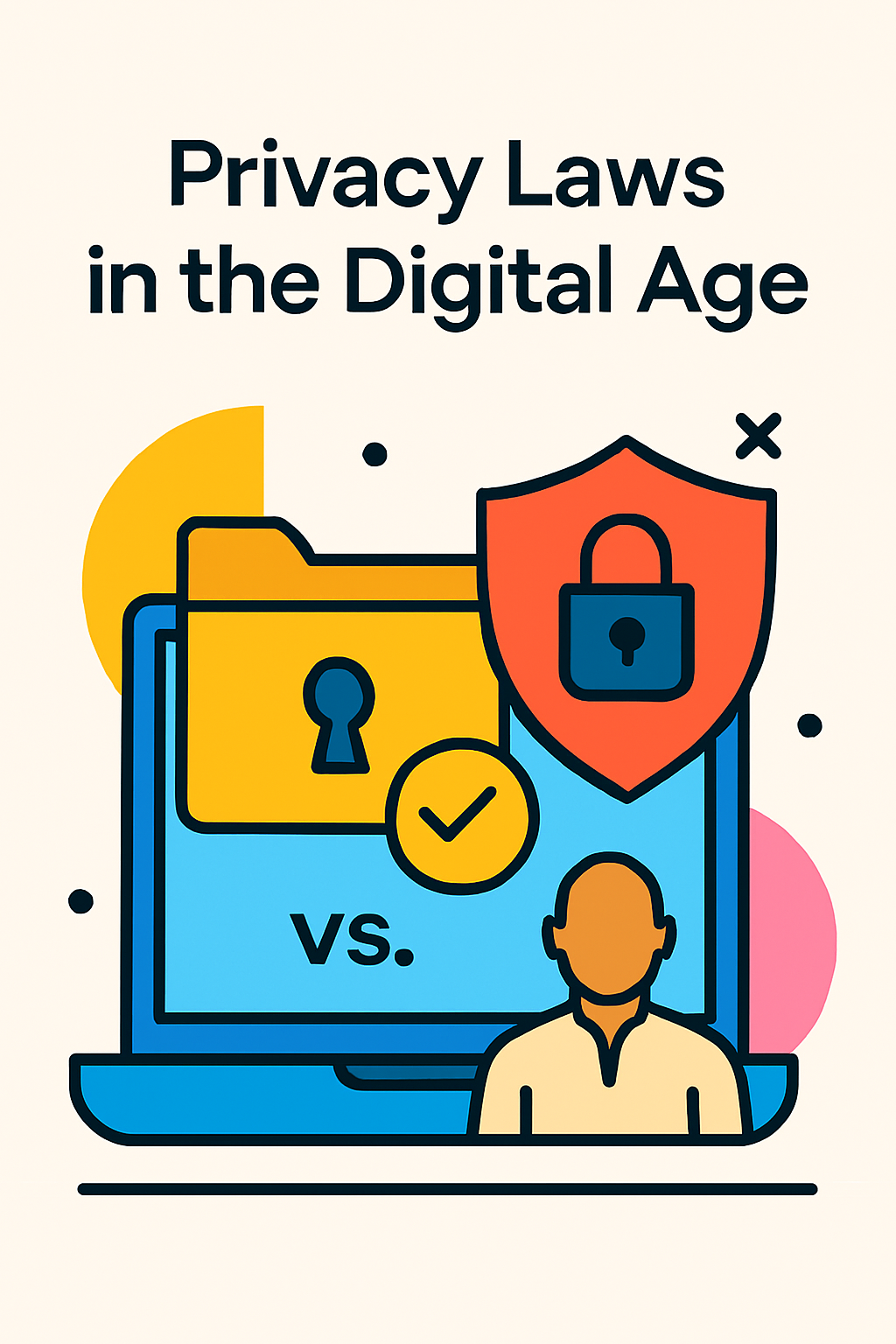



Author: Isha Choubey
University: New Law College, BVDU
Laws about privacy in the digital age
As technology changes how information is gathered, stored, and shared, privacy laws have emerged as a crucial framework for safeguarding people’s personal information in the digital era. Governments worldwide are passing or updating statutes in response to the extraordinary threats to personal privacy posed by the quick development of digital platforms, artificial intelligence, and data-driven businesses. These regulations seek to strike a compromise between the needs of innovation and security and individual rights. Examining key principles, methods of enforcement, and new concerns, this essay examines the development, tenets, and difficulties of privacy legislation in the digital age. We explore the challenges of protecting privacy in a connected society under seven subheadings.
The Development of Privacy Regulations
Since the introduction of the internet, privacy regulations have undergone tremendous change. Data protection was primitive in the beginning, frequently confined to tangible documents and fundamental consumer safeguards. With the passage of landmark legislation like the U.S. Privacy Act of 1974, which limited the use of personal data by the government, the 1970s signaled a sea change. Gaps in these frameworks were revealed by the digital revolution of the 1990s and 2000s, which was fueled by e-commerce and widespread internet adoption.
The 1995 Data Protection Directive, which established guidelines for data processing among its member states, was a groundbreaking move by the European Union. The General Data Protection Regulation (GDPR), which was implemented in 2018 and became a global standard for privacy legislation, was made possible by this directive. The GDPR affected nations all around the world by introducing strict rules for permission, data minimization, and individual rights. The lack of a comprehensive federal privacy law in the United States resulted in sector-specific laws such as the Children’s Online Privacy Protection Act (COPPA) for minors and the Health Insurance Portability and Accountability Act (HIPAA) for the healthcare industry.
Countries throughout the world have followed suit, modifying laws to fit their own circumstances while taking inspiration from GDPR. Examples of these include Canada (PIPEDA), Brazil (LGPD), and India (DPDP Act). These changes show an increasing understanding that, in an age of big data and surveillance capitalism, personal data, sometimes referred to as the “new oil,” needs strong protections to avoid misuse.
Fundamentals of Contemporary Privacy Laws
The foundation of contemporary privacy regulations is a set of universal values intended to empower people and hold businesses responsible. These consist of:
By transferring power from businesses to individuals, these concepts seek to ensure accountability. For instance, firms are compelled to assess risks before initiating data-intensive initiatives due to the GDPR’s requirement for Data Protection Impact Assessments (DPIAs). A global trend toward user empowerment is also reflected in regulations such as California’s Consumer Privacy Act (CCPA), which gives consumers the ability to opt out of data sales.
Important Privacy Laws Around the World
The global privacy environment is defined by a number of historic regulations. Non-compliance with the GDPR, which is enforced throughout the EU and European Economic Area, can result in fines of up to €20 million or 4% of yearly global turnover. It affects any organization that handles the data of EU citizens and is applicable outside national borders. Important clauses include the right to data portability and the requirement to notify parties of breaches within 72 hours.
Residents of the United States are granted the right to know, remove, and opt out of data sales by the 2020 CCPA and its successor, the California Privacy Rights Act (CPRA). These rules prioritize consumer choice over mandatory compliance, in contrast to GDPR. A patchwork of rules has resulted from other U.S. states, such as Virginia and Colorado, enacting their privacy laws.
With its emphasis on permission and the rights of data subjects, Brazil’s Lei Geral de Proteção de Dados (LGPD), which went into force in 2020, is similar to GDPR. As a response to national security concerns, India’s Digital Personal Data Protection (DPDP) Act of 2023 places a strong emphasis on user permission and data localization. In line with its larger legislative objectives, China’s Personal Information Protection Law (PIPL), which was introduced in 2021, blends governmental supervision with privacy protections.
Despite differences in their application and enforcement depending on political and cultural circumstances, these laws all share a dedication to safeguarding personal information.
Difficulties in Implementing Privacy Laws
There are many difficulties in enforcing privacy rules in the digital age. First, jurisdiction is made more difficult by the Internet’s global reach. Conflicts over relevant legislation may arise when a business with headquarters in one nation processes data in another. This is attempted to be addressed by GDPR’s extraterritorial reach, although enforcement against non-EU organizations is still challenging.
Second, regulatory agencies are hampered by a lack of resources. For instance, Ireland’s Data Protection Commission, which is in charge of monitoring numerous tech behemoths with their headquarters in Dublin, has come under fire for having too few employees and taking too long to
complete investigations. Third, technology is developing faster than laws. IoT devices, facial recognition, and artificial intelligence provide enormous datasets that are difficult for current regulations to control.
Enforcement flaws are also revealed by data breaches. As per the Identity Theft Resource Center, more than 2.6 billion personal records were compromised worldwide in 2023. Some countries’ lax punishments are ineffective at discouraging carelessness. Furthermore, it is still difficult to harmonize legislation across borders because of disparate interests, such as China’s state-centric approach and the United States’ emphasis on consumer choice.
Concerns about privacy and emerging technologies
New privacy issues are presented by emerging technologies such as blockchain, artificial intelligence (AI), and the Internet of Things (IoT). Because AI systems, especially those that use machine learning, rely on large datasets, bias and data sourcing are issues. Facial recognition software, for example, has come under fire for incorrectly identifying people, which disproportionately affects underrepresented groups.
Wearable health trackers and smart speakers are just two examples of IoT gadgets that gather data in real time, frequently without clear user authorization. Sixty percent of Americans did not know how their smart devices shared data, according to a Pew Research Center study from 2024. Despite its reputation for security, blockchain may violate privacy regulations such as the GDPR because data erasure is difficult due to its immutable ledger.
Regulators are reacting. Proposed in 2021, the EU’s AI Act aims to govern high-risk AI systems, such as those that handle personal data. In a similar vein, privacy regulations are changing to address dangers unique to the Internet of Things, like requiring security requirements for devices that are connected. But the rate of innovation keeps putting regulatory structures to the test.
The Function of People and Institutions
Though knowledge is still low, individuals play a critical role in protecting privacy. According to surveys, such as the one Cisco performed in 2023, 40% of consumers do not read privacy rules because they are too complicated. People may take charge with the help of education efforts and easy-to-use technologies like browser extensions that prevent trackers.
Meanwhile, there is increasing pressure on organizations to abide by privacy regulations. Large companies now frequently employ Data Protection Officers (DPOs), which are required by GDPR for specific entities. Additionally, businesses are spending money on privacy-enhancing technologies (PETs), like differential privacy, which maintains data’s usefulness while anonymizing it. One noteworthy example is Apple’s use of differential privacy in iOS analytics.
Costs associated with compliance, however, can be exorbitant, especially for small enterprises. According to a 2022 study conducted by the International Association of Privacy Professionals, GDPR compliance costs US businesses $150 billion a year. It’s still difficult to strike a balance between privacy obligations and innovation, so businesses must incorporate privacy-by-design into their operations.
Privacy Laws’ Future
There will probably be more harmonization and adaptability to technology changes in the future of privacy legislation. Though legislative stalemate has slowed development, proposals for a nationwide privacy law in the United States, such the American Data Privacy and Protection Act (ADPPA), seek to simplify state-level regulations. International efforts to standardize data transfers across borders include the Asia-Pacific Economic Cooperation’s Cross-Border Privacy Rules (CBPR) system.
Stricter regulation of biometrics and AI, together with a greater emphasis on data sovereignty, are emerging themes. To maintain control over the data of their residents, nations like Indonesia and India are promoting data localization. In the meantime, organizations that support privacy are demanding more rights and more enforcement, including collective redress procedures for data breaches.
To close gaps, public-private collaborations will be essential. For example, authorities and tech companies working together may create standards for new technology. Privacy rules must continue to be flexible as digital ecosystems change, striking a balance between the advantages of innovation and individual rights.
References